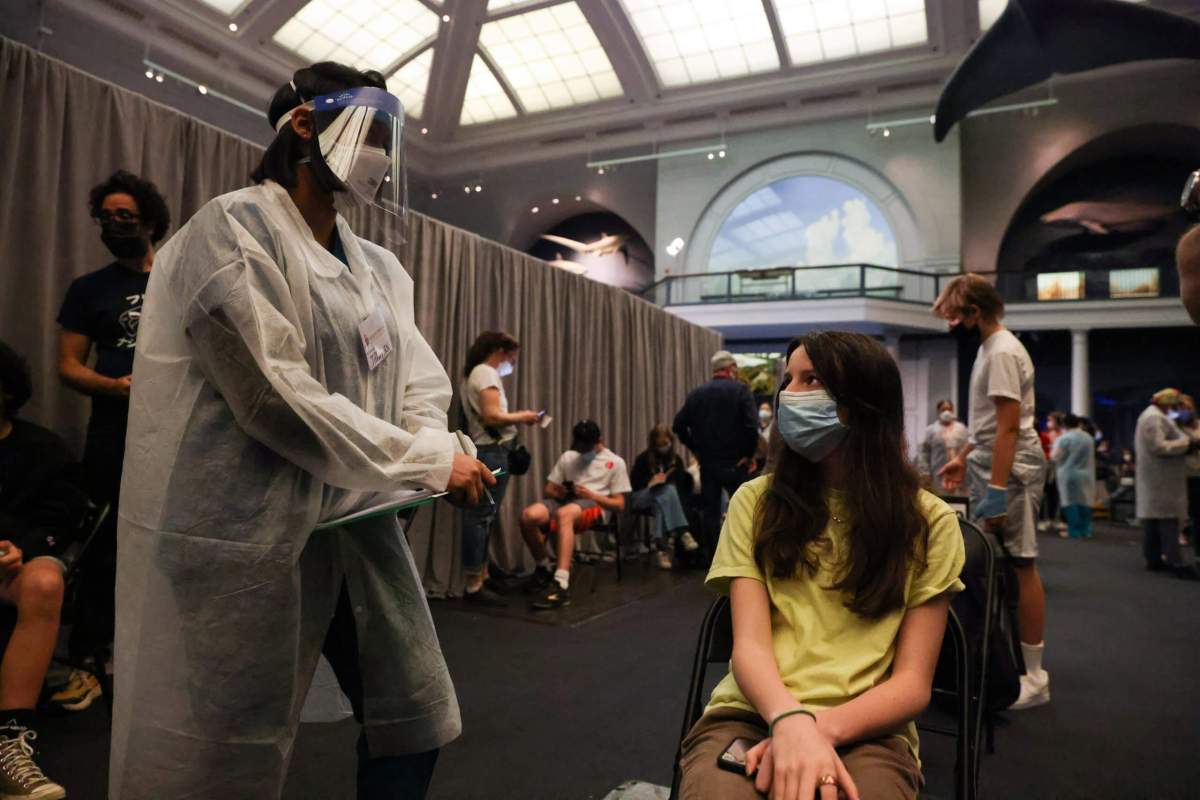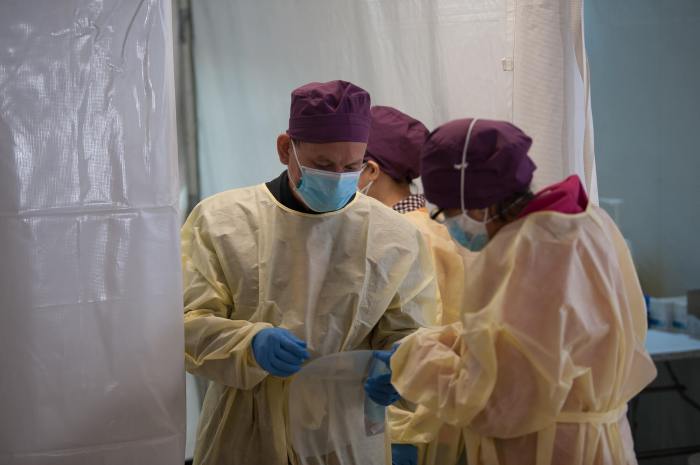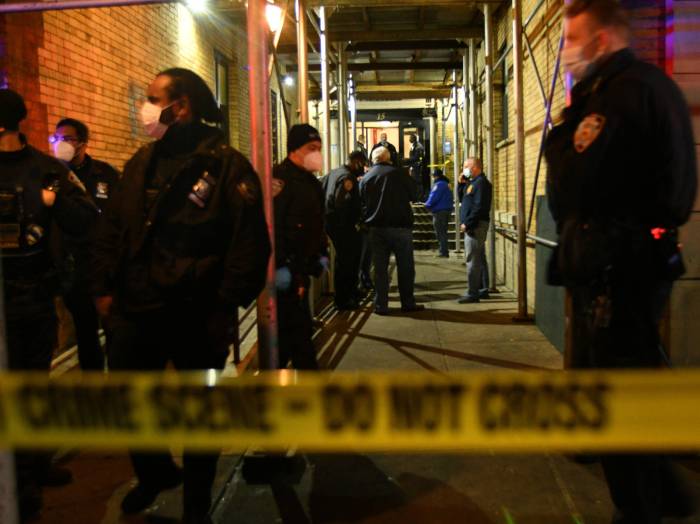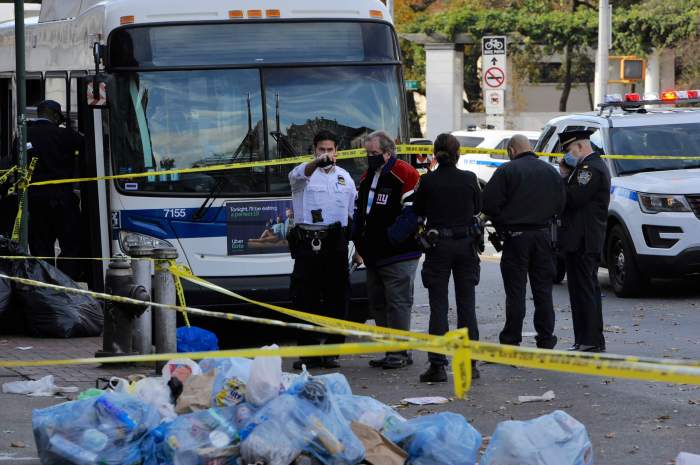COVID-19 infections continued to plunge across New York City over the last week, with more than 50 ZIP codes reporting 7-day positivity rates below 1% — and nearly 60 communities having 10 or fewer new virus cases reported to the city’s Health Department.
Not a single community in the five boroughs had a 7-day positivity rate exceeding 3.5% — or totaled more than 65 new COVID-19 cases — between May 6-12, according to the city’s Health Department data.
The infection rate continues to drop even as New York City springs back to life, with its full reopening scheduled to take place this Wednesday, May 19. Nearly half of all New Yorkers have also received at least one dose of the COVID-19 vaccine, and while progress is being made on the vaccination front, the city still has a long way to go before achieving anything close to herd immunity.
The city’s highest rate for the period was found in the 11419 ZIP code of Richmond Hill/South Ozone Park, Queens, at 3.34% — yet that was down from the 3.79% rate recorded between April 29-May 5.
Only two other areas of the city had a 7-day positivity rate above 3% between May 6-12: Tottenville, Staten Island (ZIP 10307, 3.05%) and Queens Village (11429, 3.03%).
Richmond Hill, Queens (11418) — which had the city’s highest 7-day positivity rate between April 29-May 5 at 4.65% — dropped 47 spots in the rankings, with a 1.93% rate between May 6-12. Just 18 COVID-19 cases were reported there during the most recent period, down from 47 cases recorded a week earlier.
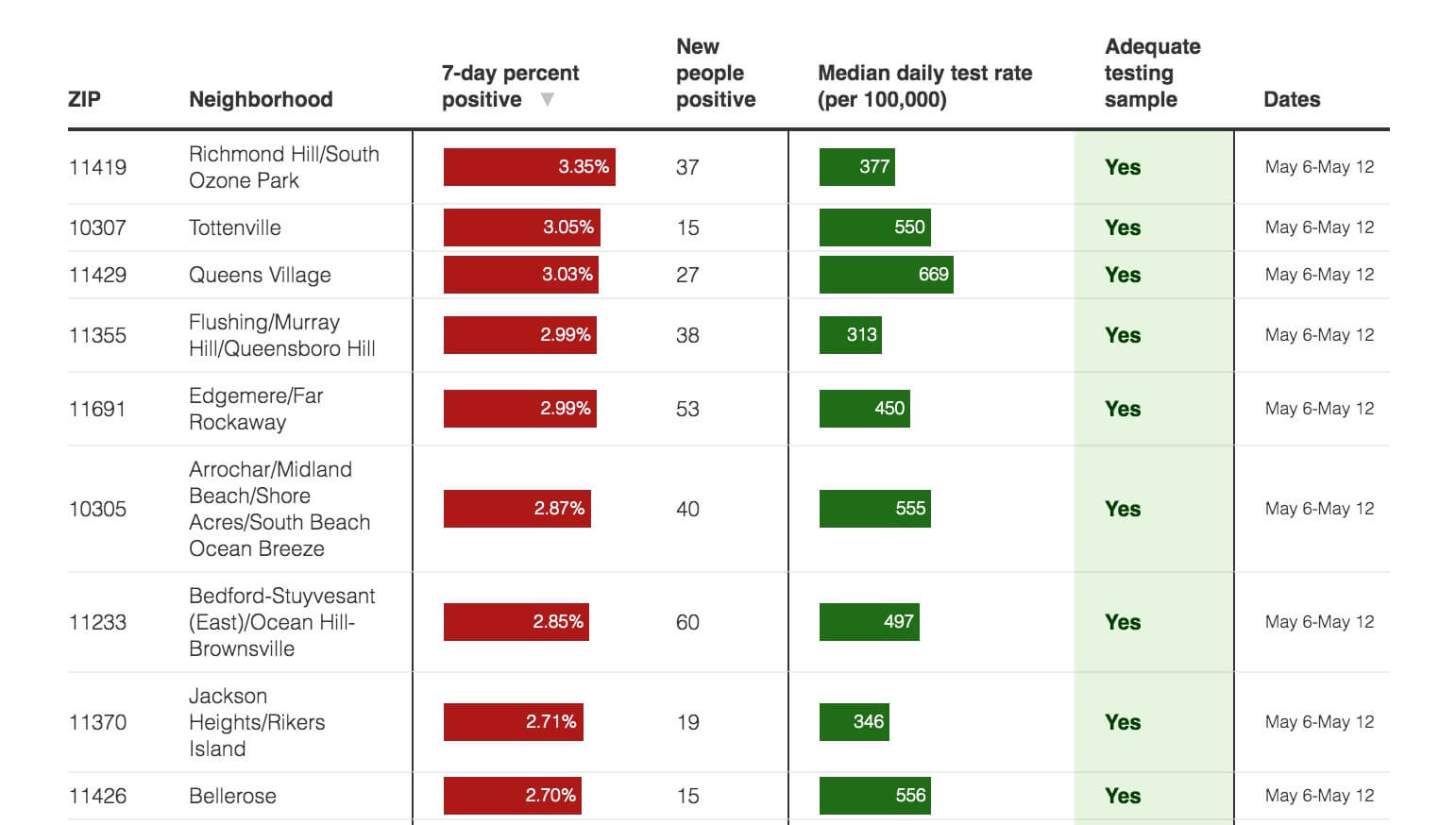
Only two ZIP code areas of NYC had 60 or more new COVID-19 infections between May 6-12; a week earlier, three communities had 100 or more new cases.
The most new virus cases between May 6-12 were detected in Corona/North Corona, Queens (11368, 61 cases) and Bedford-Stuyvesant/Ocean Hill/Brownsville, Brooklyn (11223, 60 cases). Two areas of Cypress Hills and East New York (11207 and 11208), which led the city with a combined 209 cases between April 29-May 5, had just 113 new cases in the most recent period — a 45.9% dropoff.
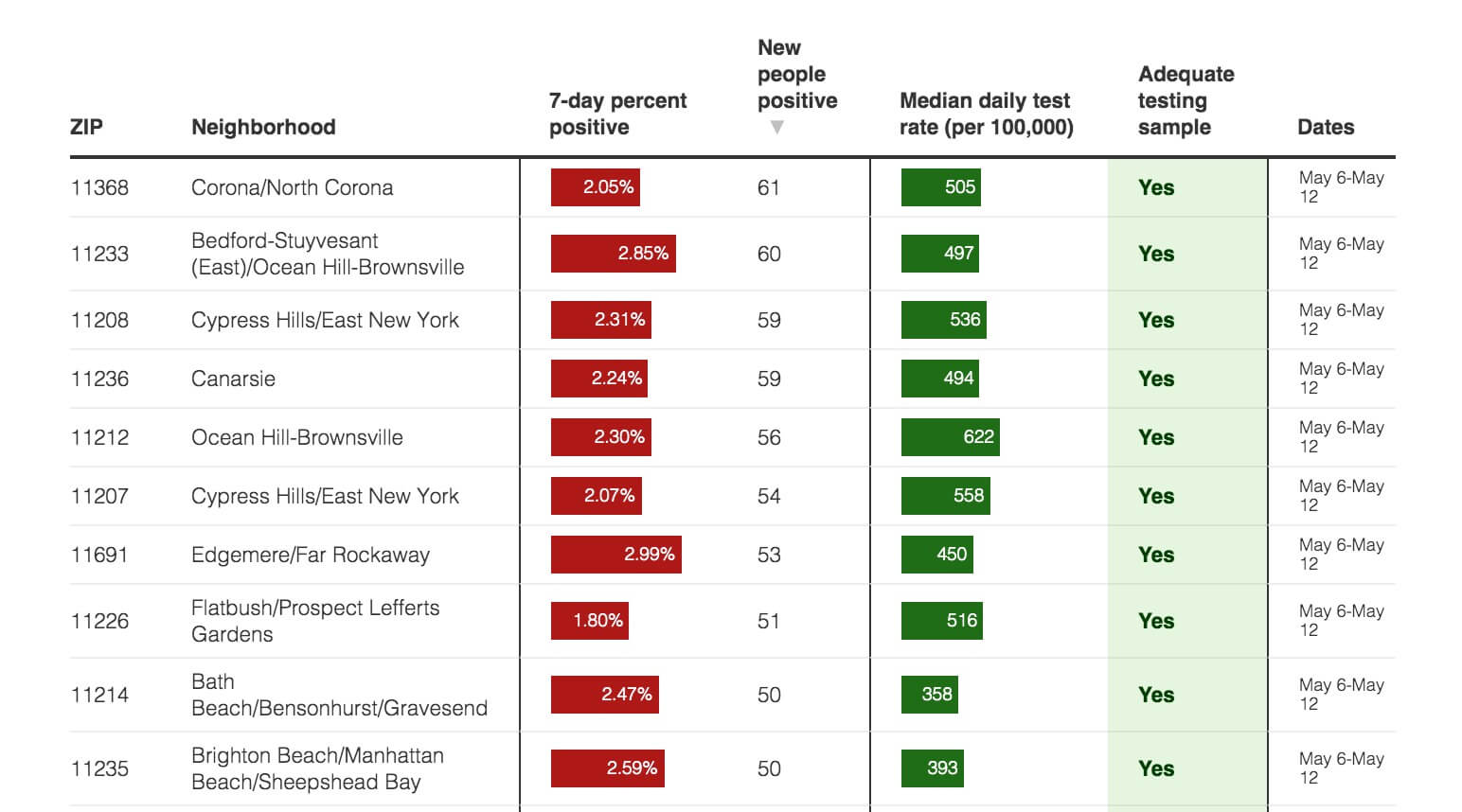
Meanwhile, seven areas of New York City had no new infections and a 0% 7-day positivity rate between May 6-12. Five of them are in Manhattan: the Financial District (ZIP codes 10004 and 10006), Tribeca (10007), Lenox Hill/Upper East Side (10075 and 10162) and Battery Park City (10280).
Two Queens neighborhoods also had zero positivity: Breezy Point (11697) and Douglaston/Little Neck (11363). Breezy Point made quite a turn around since early spring; the small seaside community at the western tip of the Rockaway Peninsula had the highest positivity rate in the city between March 23-29 at 12.42%.
Between May 6-12, 45 other areas across New York City had 7-day positivity rates below 1%. Twenty-seven of them were in Manhattan, followed by 16 in Queens and Brooklyn (8 per borough), and two in the Bronx.
All told, 59 ZIP codes across the five boroughs registered 10 or fewer new COVID-19 infections during the same period.
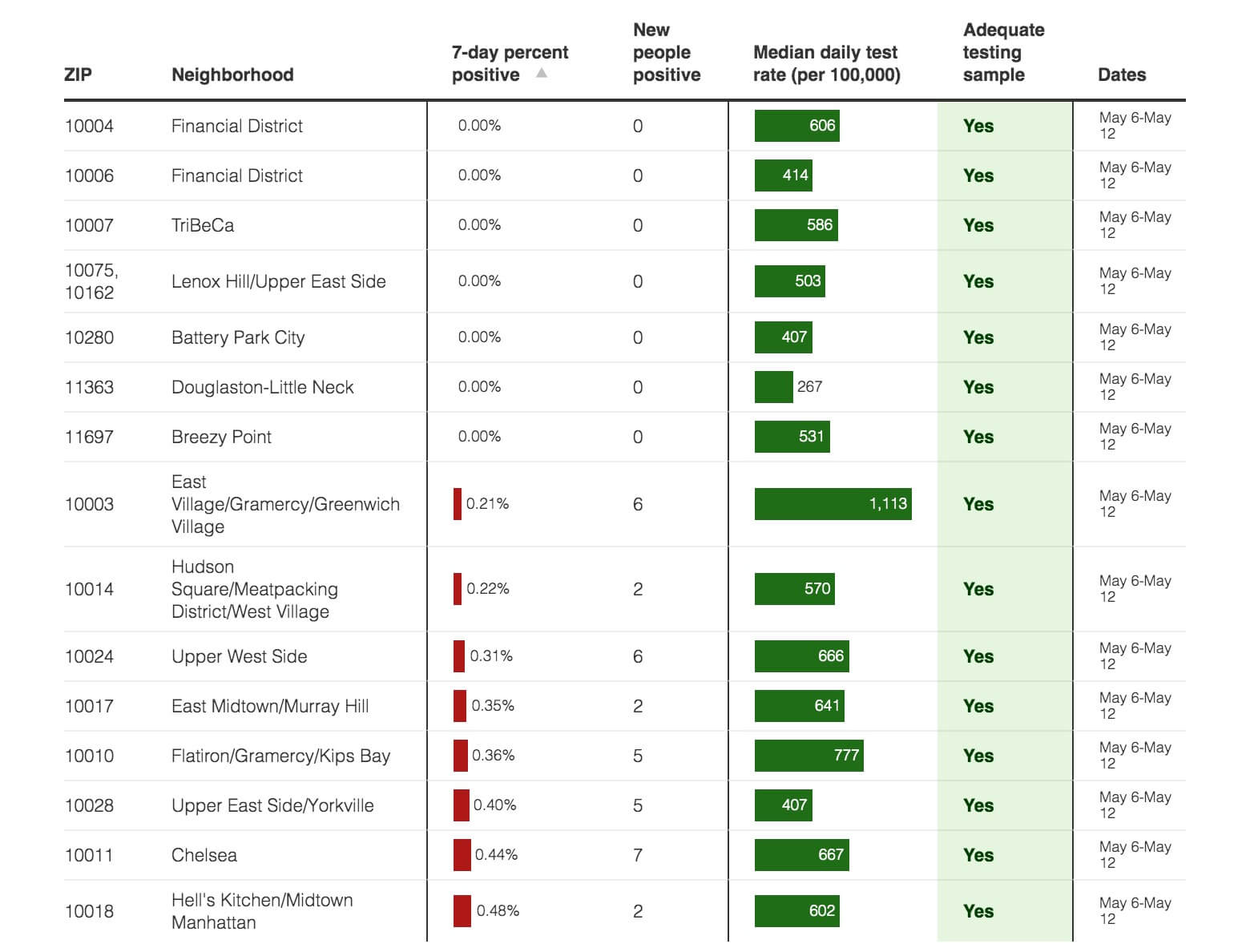
It’s no surprise that Manhattan has so many neighborhoods with low COVID-19 infection rates; the borough also has the most vaccinated New Yorkers, based on the city’s Health Department data.
Approximately 59% of all Manhattan residents have received at least one dose of the vaccine, while 50% of the entire population on the island are now fully vaccinated. That’s the best total in the city.
Queens is running second in the vaccination derby with 51% of residents having had at least one dose and 41% fully vaccinated; followed by Staten Island at 44% with at least one-dose and 37% fully vaccinated; Brooklyn at 41% with one-dose and 33% fully vaccinated; and the Bronx at 38% with one-dose and 30% fully vaccinated.
Overall, 47% of New York City residents have had at least one shot, and 38% were fully vaccinated as of May 12.
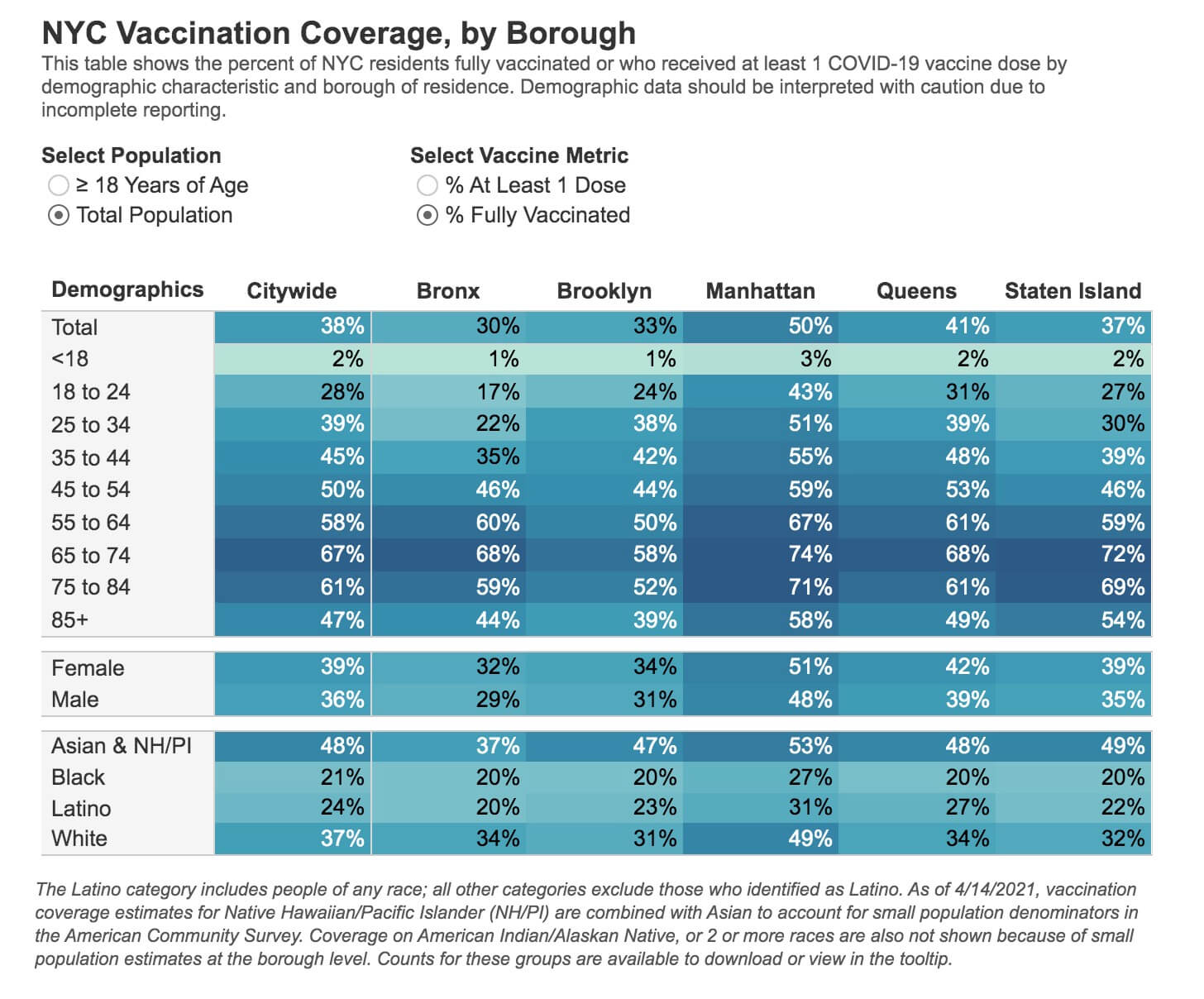
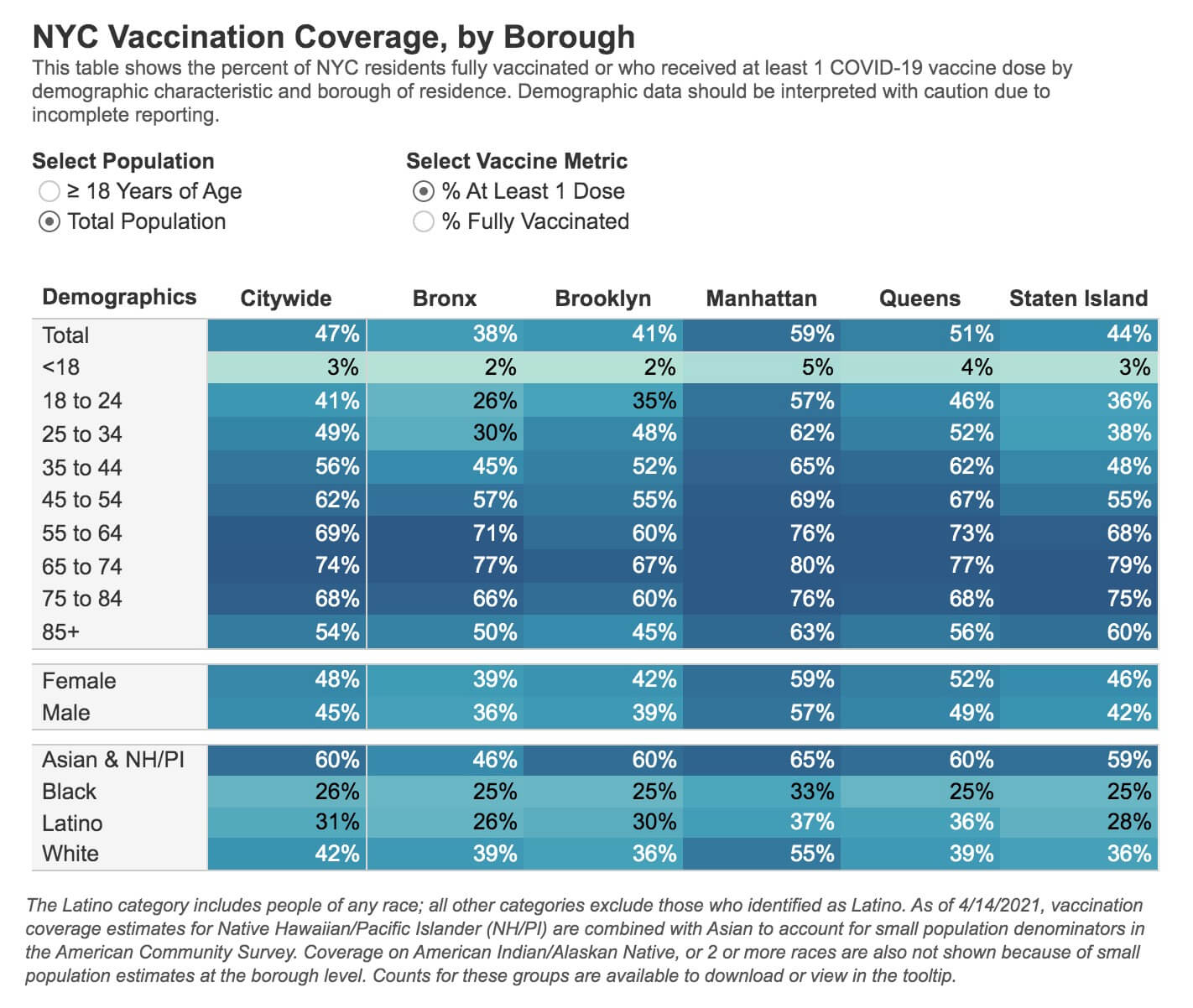
The state Health Department data released Sunday continues to support the slowing infection rate across the city. New York City’s positivity rate was down to 0.95% as of May 15, according to Governor Andrew Cuomo, though the city logged 628 of the 1,561 (40.2%) of the state’s new positive cases reported that day.
Statewide, the hospitalization, intensive care and intubation rates have dropped to levels not seen since early November 2020, Cuomo said. New York state’s positivity rate has also declined each of the last 41 days.
Even so, the virus remains a killer to too many of its hosts. Thirty-three New Yorkers died of COVID-19 on May 15, including three in the Bronx, seven in Brooklyn, two in Manhattan, five in Queens and one on Staten Island.



